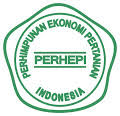Daya Saing Buah Tropis Indonesia Di Pasar Asia Tenggara
DOI:
https://doi.org/10.25181/jofsa.v8i1.4090Keywords:
Tropical Fruit, Competitiveness, Export, Trade IntegrationAbstract
Tropical fruit is a potential commodity, contributing 54.7% to the national horticulture GDP, included in the main component of the Pola Pangan Harapan, and a part of Southeast Asia's national horticulture development goals. Fruits with the highest export value are mangoes, mangosteens, guavas, oranges, and watermelons. This study aims to determine the export competitiveness of Indonesian tropical fruit commodities in the Southeast Asian market. The research methods used Revealed Comparative Advantages (RCA), Export Product Dynamics (EPD), Intra Industry Trade (IIT). The results showed that based on RCA analysis, the fruits with strong competitiveness were mango, mangosteen and guava, pineapple, and watermelon in Malaysia and Timor Leste. The EPD analysis results show that most Indonesian tropical fruit in Malaysia is in the Rising Star position, Timor Leste Lost Opportunity, and Singapore Retreat and Falling Star. IIT analysis shows that trade integration between Indonesia and Malaysia is in moderate indicators, and Singapore and Timor Leste is still weak.Downloads
References
Ahyani, N. (2019). Kajian Keanekaragaman Semangka (Citrus lanatus) di Indonesia. Prosiding Seminar Nasional Biodiversitas Indonesia, Gowa, 20 A(ISBN: 978-602-72245-4-4), 22–24.
Ali, A. M. (2021). Industri Nanas : Peranan dan Cabaran dalam Penjanaan. Journal of Economic and Sustainability, 3(2), 1–15.
Barades, E., Alimuddin, A., & Sudrajat, A. O. (2013). Elektroporasi dan transplantasi sel testikular dengan label GFP pada ikan nila Electroporation and GFP-labelled transplantation of testicular cells in Nile tilapia. Jurnal Akuakultur Indonesia, 12(2), 186–192. https://doi.org/10.19027/jai.12.186-192
Comtrade, U. (2021). UN Comtrade Database.
Desfaryani, Rini; Hartoyo, S; Anggraeni, L. (2016). Permintaan buah-buahan rumahtangga di Propinsi Lampung. Jurnal Agribisnis Indonesia, 4(2), 137–148.
Fauziah, D. N. (2019). Analisis Daya Saing dan Faktor Faktor yang Mempengaruhi Tingkat Ekspor Kentang di Singapura dan Malaysia.
Graber, A., & Junge, R. (2009). Aquaponic Systems: Nutrient recycling from fish wastewater by vegetable production. Desalination, 246(1–3), 147–156. https://doi.org/10.1016/j.desal.2008.03.048
Hidayati, T. N., & Suhartini, S. (2018). Analisis Daya Saing Ekspor Pisang (Musa Paradiacal.) Indonesia di Pasar Asean Dalam Menghadapi Masyarakat Ekonomi Asean (MEA). Jurnal Ekonomi Pertanian Dan Agribisnis, 2(4), 267–278.
Landi, H. K. (2017). Analisis Daya Saing Ekspor Buah Nenas Kalengan Indonesia di Pasar Internasional.
Mahmudah, R. (2020). Analisis Faktor-Faktor yang Mempengaruhi Daya Saing Mangga (Mangifera Indica) Indonesia di Pasar Internasional.
Nugroho, R. A., & Jati, K. (2018). Potensi Peningkatan Akses Pasar Produk Indonesia ke Perekonomian APEC Untuk Mengantisipasi Realisasi FTAAP. Buletin Ilmiah Litbang Perdagangan, 12(2), 135–160.
Perekonomian, K. K. B. (2021). Pengembangan Hortikultura Berorientasi Ekspor.
Permana, S. (2018). Analisis Faktor-Faktor yang Mempengaruhi Produksi Buah Mangga di Desa Jatisura Kecamatan Cikedung Kabupaten Indramayu.
Pertanian, B. K. (2017). Seri Pedoman Sertifikasi Fitosanitari Komoditas Ekspor Indonesia. Jakarta: Kementerian Pertanian.
Peternakan, D. K. P. dan. (2017). Pola Pangan Harapan.
Poerwanto, R., & Susila, A. D. (2021). Teknologi Hortikultura. In IPB Press.
Pradipta, A., & Firdaus, M. (2015). Competitive position and factors affecting Indonesian fruit exports. Jurnal Manajemen & Agribisnis, 11(2), 129–143.
Pratiwi, H. A. B. (2019). Analisis Daya Saing Buah-Buahan Tropis Indonesia.
Pudyastusi, P. A., Sambado, H., & Windhani, K. (2018). Analisis Daya Saing Ekspor Komoditas Udang Indonesia di Pasar Eropa Tahun 2008-2016. Seminar Nasional Dan Call Paper Sustainable Competitive Advantage(SCA), (September), 1–13.
Saphira, K. (2019). Kerjasama Indonesia dengan China terhadap Impor Buah Jeruk. Jurnal Transborders, 2(2), 128.
Yokoyama, H. (2013). Growth and food source of the sea cucumber Apostichopus japonicus cultured below fish cages - Potential for integrated multi-trophic aquaculture. Aquaculture, 372–375, 28–38. https://doi.org/10.1016/j.aquaculture.2012.10.022
Downloads
Published
How to Cite
Issue
Section
License
Copyright (c) 2024 Journal of Food System and Agribusiness

This work is licensed under a Creative Commons Attribution-NonCommercial 4.0 International License.
With the receipt of the article by the Journal of Food System and Agribusiness Editorial Board and the decision to be published, then the copyright regarding the article will be diverted to the Journal of Food System and Agribusiness.
Politeknik Negeri Lampung as the publisher of the Journal of Food System and Agribusiness holds the copyright regarding all the published articles in this journal.
Politeknik Negeri Lampung has the right to multiply and distribute the article and every author is not allowed to publish the same article that was published in this journal.
The manuscript authenticity and copyright statement submission can be downloaded ON THIS FORM. Fill out the form and submit as a supplementary file.
All publications by Journal of Food System and Agribusiness is licensed under a Creative Commons Attribution Non-Commercial 4.0 International License.
























